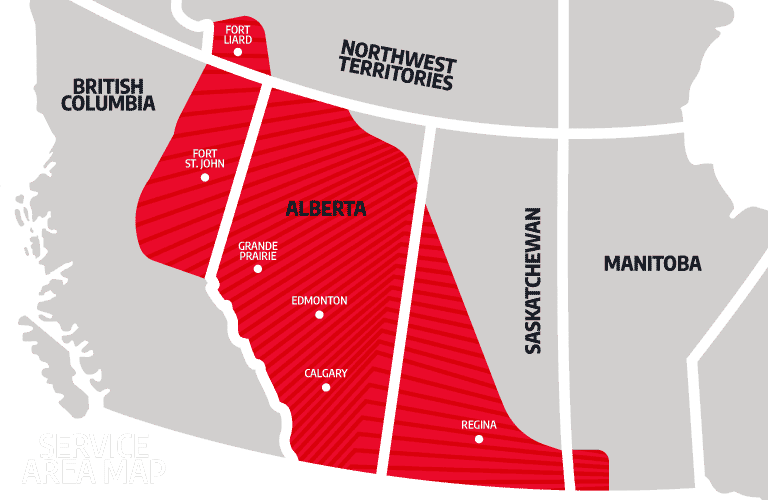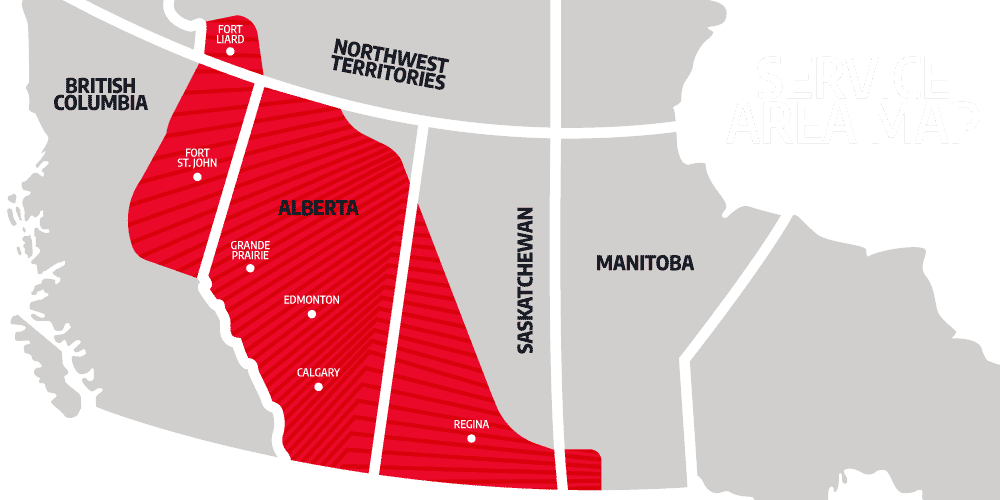Fugitive Emissions Surveys
Surface Solutions utilizes state-of-the-art gas imaging cameras that can detect a stream of pure methane gas emitted at a rate of 1.0 grams per hour or less to perform fugitive emissions surveys on diverse oil and gas facilities. Viable facilities include gas plants, compressor stations, satellite sites, treating facilities, terminals, hydrocarbon storage tanks, battery sites, injection/disposal facilities, and straddle and fractionation plants.
Unintentional equipment leaks at oil and gas facilities, considered fugitive emissions, account for nearly 10% of the overall inventory of methane releases in the province. On January 1, 2020, the government implemented rigid regulations that state operators must inspect, report, repair, and take the necessary action to reduce their fugitive emission inventory on applicable facilities.
Fugitive emissions are expected to result from components having initially been improperly installed, wearing out or failing over time, or loosening due to vibration in regular use. Fugitive emissions are detected during a fugitive emissions comprehensive survey or screening survey, and the component can often be refitted, repaired, or replaced immediately with little long-term impact.
Survey frequency varies site-to-site, and Surface Solutions’ experts can work with Western Canadian operators to determine an optimal survey schedule. All Surface Solutions programs comply with AER Directive 060 to reduce methane emissions.
Abnormal Processes Cause Fugitive Emissions
Fugitive emissions from abnormal or malfunctioning processes typically result from equipment becoming inoperative or from processes functioning abnormally. These emissions are more difficult to detect as they can be intermittent and require a full detailed investigation before the source can be properly identified and repaired to regulator standards.
Fugitive emissions can stem from several abnormal sources at an oil and gas facility, including unlit flares from faulty ignitors and inactive pilots, malfunctioning pressurized pneumatic devices, and vapor recovery units that have quit operating as intended. While some leaks might require a shutdown or the site to be depressurized to repair them, components can often be repaired or replaced immediately.
Hydrocarbon storage tanks are often also sources of fugitive emissions from abnormal processes when a volatile product moves past blowdown valves or gas, and liquids are separated inefficiently with a glycol dehydrator. Pigging processes that displace large volumes of gas into the tank or the thief hatches are opened outside of pressure relief can be identified as a source of fugitive emissions.
Comprehensive Fugitive Emissions Survey
Surface Solutions ensures all fugitive surveys are performed within AER-mandated protocols. Our experts survey a minimum of 6 meters for any single survey. Comprehensive surveys include all equipment and components at a facility or well site that could produce fugitive emissions, including pressurized pneumatic devices.
Any component deemed unable to be surveyed due to being unsafe, difficult, or inaccessible to include in a survey will be documented in each survey report.
Depending on the survey method, components that cannot be surveyed will be deemed dangerous due to the immediate danger of completing the survey. Survey components inaccessible because they are buried, insulated, or obstructed by equipment or piping that prevents access to the components by the surveyor will also be documented. For detecting leaks in storage tank components, Surface Solutions’ experts will utilize our optical gas imaging to find a clean line of sight to ensure accurate data and surveillance.
Surface Solutions Fugitive Emissions Surveys
When completing fugitive emissions surveys, Surface Solutions experts complete extensive multi-touchpoint surveys. For each survey, we include any equipment components with hydrocarbon throughout, hydrocarbon gas-driven pneumatic devices, tank-top equipment, including their hatches and gauge-board assemblies, surface casing vents, and the area around the wellbore. Any equipment used to vent gas, including burners, flame igniters, pilot lights, combustors, and any equipment used to conserve vent gas, including vapor recovery units and vent capture systems.
Surface Solutions utilize gas imaging cameras, often referred to as optical gas imaging cameras, to detect fugitive emission sources. These cameras provide images and video recordings of leaks that are invisible to the human eye. Additionally, they can be utilized when it is not practical to use an organic vapor analyzer, which is the industry standard when the component is hard to reach or is difficult to access with the analyzer’s probe. Gas imaging cameras can also detect leaks from a safe distance, even when undetectable to the naked eye, and are displayed as clouds of smoke.
With the technological advances in data acquisition, cloud storage, and the ability to seamlessly sync data from well sites to the office, oil and gas producers can easily access flexible and affordable test data that allows operators to make business decisions as needed. Surface Solutions has built a solid foundation for its business based on innovative leadership, the adoption of industry-leading technology, and exemplary customer service.
Planning is key at Surface Solutions. By Utilizing our extensive database of comparative data and extensive databases, we save our clients time and money while managing their complete production testing and emission testing needs.



